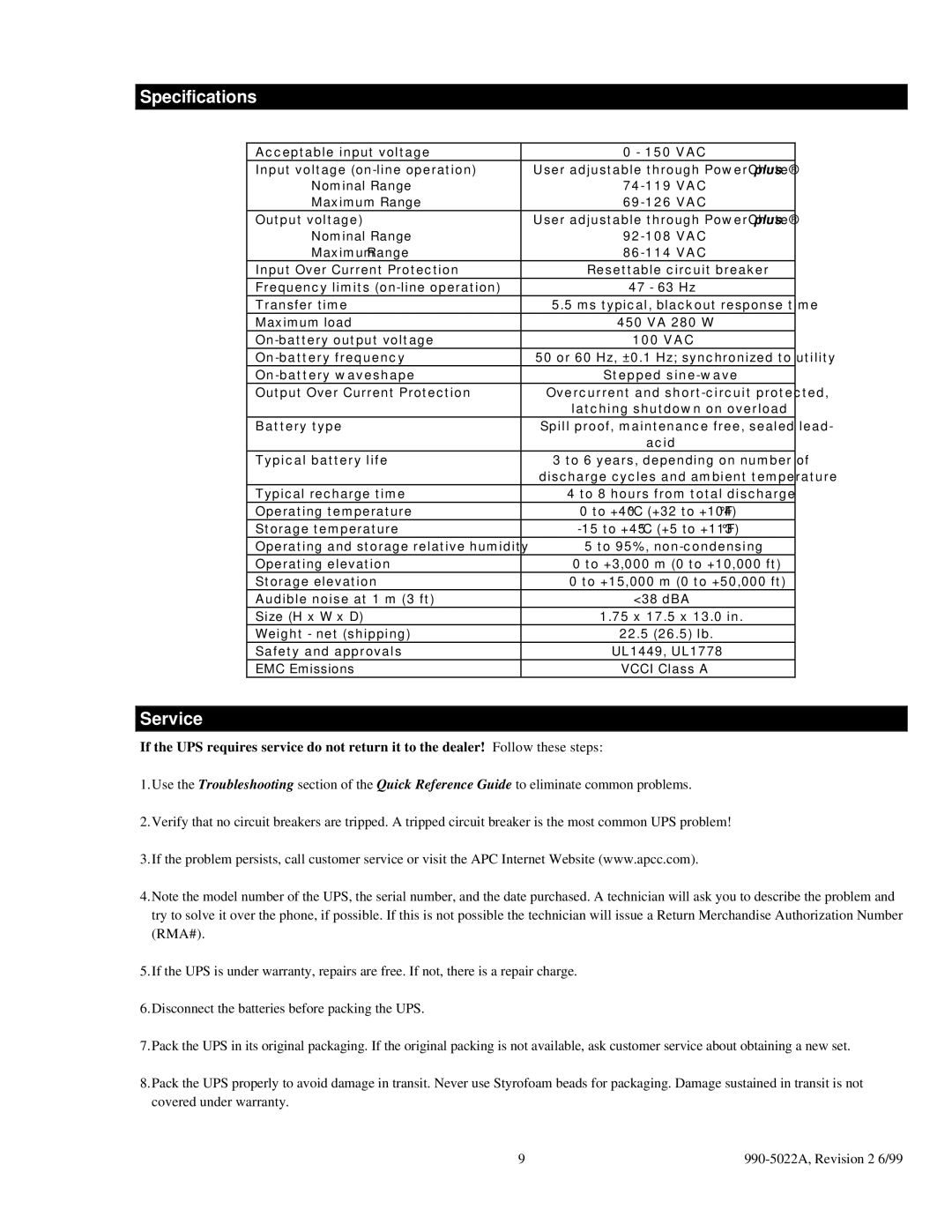
Specifications
Acceptable input voltage | 0 - 150 VAC |
Input voltage | User adjustable through PowerChute® plus. |
Nominal Range | |
Maximum Range | |
Output voltage) | User adjustable through PowerChute® plus. |
Nominal Range | |
Maximum Range | |
Input Over Current Protection | Resettable circuit breaker |
Frequency limits | 47 - 63 Hz |
Transfer time | 5.5 ms typical, blackout response time |
Maximum load | 450 VA 280 W |
100 VAC | |
50 or 60 Hz, ±0.1 Hz; synchronized to utility | |
Stepped | |
Output Over Current Protection | Overcurrent and |
| latching shutdown on overload |
Battery type | Spill proof, maintenance free, sealed lead- |
| acid |
Typical battery life | 3 to 6 years, depending on number of |
| discharge cycles and ambient temperature |
Typical recharge time | 4 to 8 hours from total discharge |
Operating temperature | 0 to +40 °C (+32 to +104 °F) |
Storage temperature | |
Operating and storage relative humidity | 5 to 95%, |
Operating elevation | 0 to +3,000 m (0 to +10,000 ft) |
Storage elevation | 0 to +15,000 m (0 to +50,000 ft) |
Audible noise at 1 m (3 ft) | <38 dBA |
Size (H x W x D) | 1.75 x 17.5 x 13.0 in. |
Weight - net (shipping) | 22.5 (26.5) lb. |
Safety and approvals | UL1449, UL1778 |
EMC Emissions | VCCI Class A |
Service
If the UPS requires service do not return it to the dealer! Follow these steps:
1.Use the Troubleshooting section of the Quick Reference Guide to eliminate common problems.
2.Verify that no circuit breakers are tripped. A tripped circuit breaker is the most common UPS problem!
3.If the problem persists, call customer service or visit the APC Internet Website (www.apcc.com).
4.Note the model number of the UPS, the serial number, and the date purchased. A technician will ask you to describe the problem and try to solve it over the phone, if possible. If this is not possible the technician will issue a Return Merchandise Authorization Number (RMA#).
5.If the UPS is under warranty, repairs are free. If not, there is a repair charge.
6.Disconnect the batteries before packing the UPS.
7.Pack the UPS in its original packaging. If the original packing is not available, ask customer service about obtaining a new set.
8.Pack the UPS properly to avoid damage in transit. Never use Styrofoam beads for packaging. Damage sustained in transit is not covered under warranty.
9 |
|
